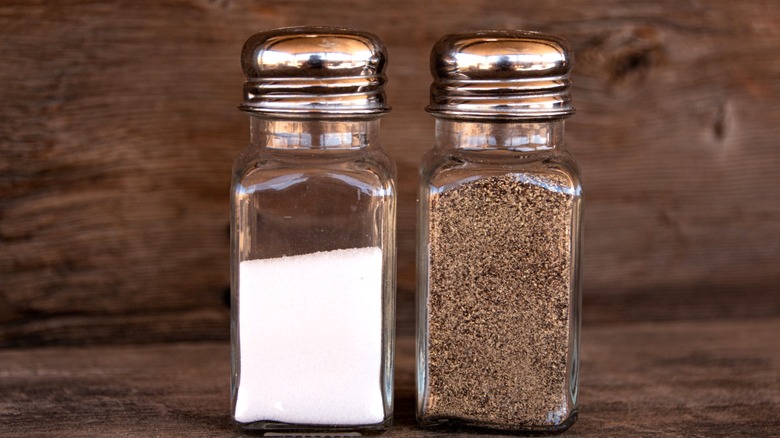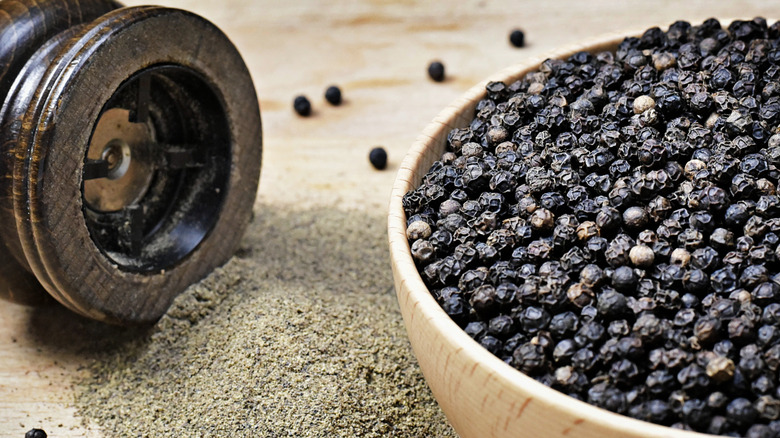Why Is There Always Salt And Pepper Shakers On The Table And Not Another Spice Combo?
Let's take a moment to consider those reliable workhorses, salt and pepper. They're a dependable presence in your kitchen, on your dining room table, and at just about every restaurant you'll ever go to. They work in tandem to bring flavor to your food, livening up your eggs, your steaks, and your favorite warming soup recipes. They feature as an inexplicably French married couple on "Blue's Clues"; even more inexplicably, they have four children, none of whom are salt or pepper. (Their children are Paprika, Cinnamon, Sage, and Ginger, if you're unfamiliar with "Blue's Clues" lore.) We may take them for granted sometimes, but we're glad we have them in our lives.
But when did salt and pepper become the go-to seasoning duo in the Western world? Why couldn't it be another pair of spices? Why don't most restaurants have little shakers of, say, cumin and turmeric on the table? The answer has to do with taste, the availability of spices, and a chef in 17th century France.
Salt, has been used both a preservative and a flavor enhancer, in some form or another, for thousands of years — whether that's curing meat with it, sprinkling food with it, or turning it into condiments like gravy-enhancing soy sauce. Not only is it a vital nutrient, it enhances the natural flavor of whatever it touches — a valuable quality for any seasoning, we're sure you'll agree. It can amplify the umami notes, reduce bitterness, or increase sweetness depending on how much is used. Pepper, on the other hand, was a more recent addition to the dinner table.
Pepper was seen as a milder, gentler spice
Pepper itself has long been held in high esteem: Like salt, it was also historically used as a form of payment in ancient times, such was its value. But before the 17th century, there was no real need to season your food at the table. Those who were wealthy enough to afford spices would have their cooks add them to their dishes in the kitchen, usually in very generous qualities. It was as much about showing off one's status as it was about taste, which meant dishes were positively loaded with strong flavors.
Eventually, spices became more broadly accessible, and therefore less attractive as a status symbol. In the 17th century, a new theory emerged, promoted by an influential French chef named François Pierre La Varenne, who was also the royal chef to Louis XIV. He argued that adding heaps of exotic spices to food detracted from its natural flavor, and that cooks should use milder herbs like parsley to season their dishes.
The one spice La Varenne had time for was pepper, which he believed was mild enough to complement natural flavors without overpowering them. And so, thanks to economics, shifting social mores, and good old fashioned French culinary snobbery, these two soulmates found each other at the dining table. We still pair them together — though if you want to experience them at their best, choose whole peppercorns over ground black pepper for the fullest flavor.

